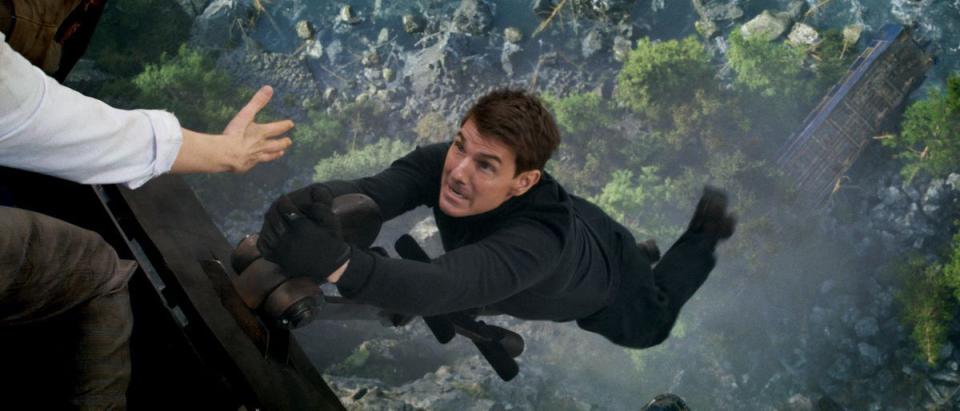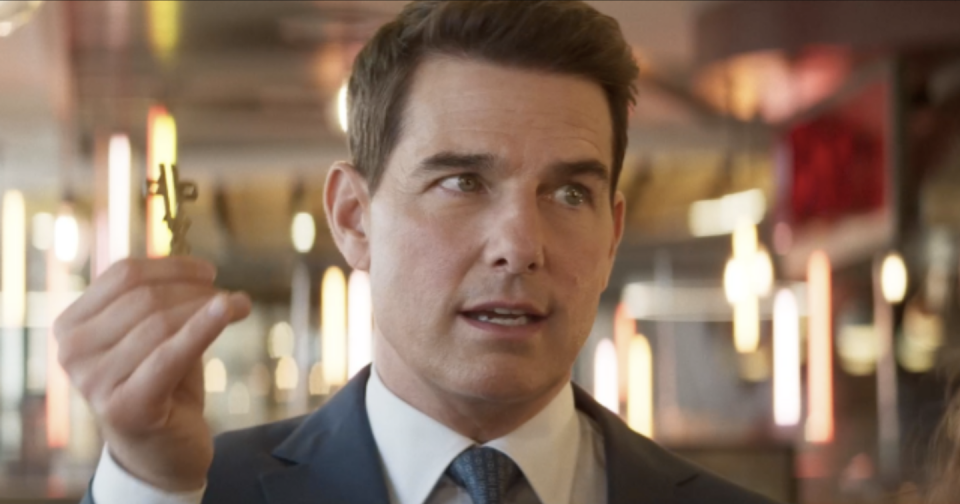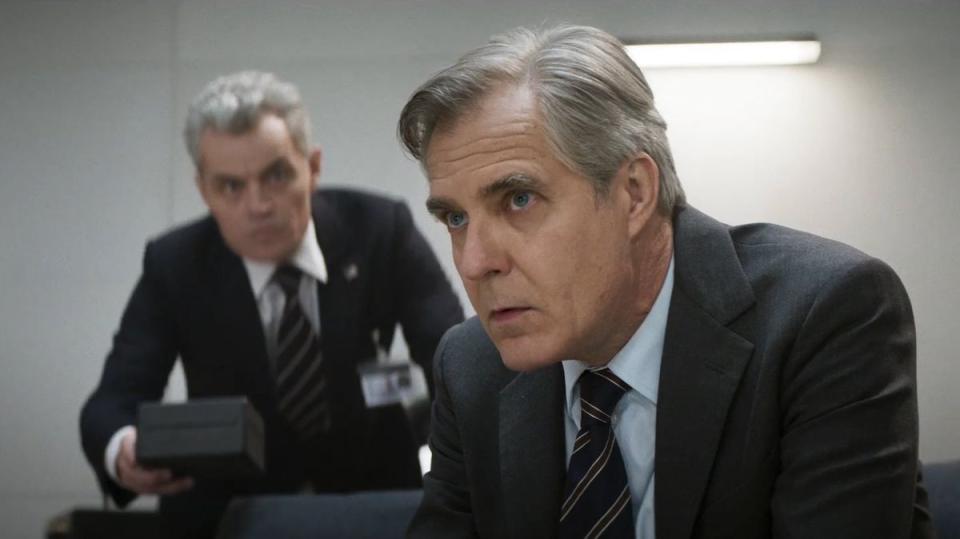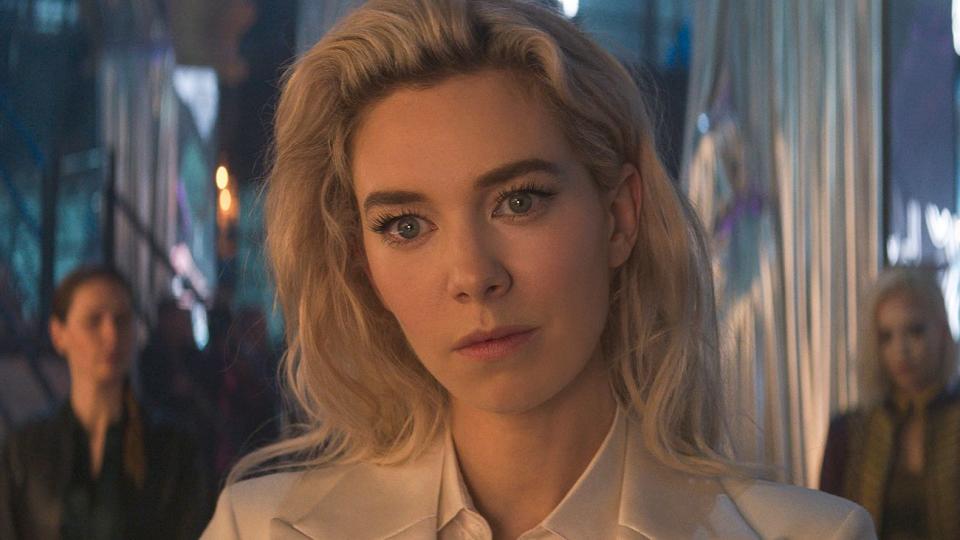The 'Mission: Impossible — Dead Reckoning Part One' Ending, Explained
- Oops!Something went wrong.Please try again later.
- Oops!Something went wrong.Please try again later.
The following story contains spoilers for Mission: Impossible — Dead Reckoning Part One.
WHILE THE early installments of the Mission: Impossible franchise were all, essentially, standalone Ethan Hunt adventures, finding Tom Cruise's hero with a different problem, a different director, and a different haircut in every movie, things have changed drastically in the last decade. Ever since Christopher McQuarrie took over as the series' writer/director with 2015's Mission: Impossible — Rogue Nation, the series has become much more serialized, not only building on the characters of Ethan Hunt and those around him (including Simon Pegg's Benji, Ving Rhames' Luther, and Rebecca Ferguson's Ilsa Faust), but also carrying plot points over from movie to movie as well.
The series' seventh installment, Dead Reckoning — Part One, finds McQuarrie embracing this more than ever. Obviously, the movie is inherently serialized; while it's a self-contained story and one of the best movie's of the year so far, it's also very clearly a primer for a second chapter (which will hit theaters next year, barring any changes via the SAG or WGA strikes). But Dead Reckoning's storytelling also looks heavily toward the past almost as much as the future.
On top of Luther and characters from the last few movies—Benji, Ilsa—Ethan also encounters a villain, Gabriel, (Esai Morales) who has a deep tie to his own past. We don't know a ton of details, but we see a black and white flashback scene where a woman close to Ethan is murdered by Gabriel. Flash forward to the present, and you can see why Gabriel's sudden emergence—and alliance with the evil and all-knowing AI force known as The Entity—is quite troubling.

Ethan also encounters a figure from his past—six movies in the past, to be precise. We haven't seen Eugene Kittridge (Henry Czerny) since 1996's Mission: Impossible, the Brian De Palma-directed spy/espionage/paranoid thriller extravaganza. Early in Dead Reckoning — Part One, we see Ethan and Kittridge finally reunite. It's worth remembering, at this point that Ethan and Kittridge are, for the most part, on the same side. But sometimes they share quite different philosophies. And this plays a key part in understanding what, exactly, is going on at the end of Mission: Impossible — Dead Reckoning Part One.
Of course, the movie ends with some of the most intense stunts and action you'll ever see. Ethan jumps off a cliff on a motorcycle and parachutes into a train car. He fights Gabriel on top of said train while eluding a force of government agents (led by Shea Whigham and Greg Tarzan Davis). There's a lot going on.
But for now, we want to focus on the Macguffin at the center of the movie: that two-piece, cross-shaped key. All movie, forces good and bad were chasing it. And, the movie's final sequence finds it in the possession of Grace (Hayley Atwell) disguised as the White Widow (Vanessa Kirby), until Gabriel gets his hands on it... until Ethan gets his hands on it.
Who has the key in Dead Reckoning — Part One, and what does it do?

There's a lot of somewhat confusing and also probably unimportant jargon thrown around about the key, when, in reality, it's just mean to drive the characters—good and evil—throughout the movie. But we didn't see that opening scene aboard the Russian submarine for no reason. As Director of National Intellignce Denlinger (Cary Elwes) tells Gabriel and Paris (Pom Klementieff), the Russian submarine Sevastopol, that we saw in the film's scene, has an early version of The Entity's software downloaded. And so anyone who has the key and gets to the submarine could, theoretically, either control or destroy The Entity.
Denlinger ensures he's the only one with this information when he offers Gabriel and Paris an alliance; Gabriel speaks and acts for The Entity, and The Entity doesn't want anyone to control or destroy it. So killing Denlinger (an asshole, to be clear) is an easy choice. But he can't trust Paris—which leads to his attacking her, and her later jump to the IMF and Ethan Hunt's side.
And while, at the end of the movie, Gabriel thinks he has the key, and, thus, the power—Ethan pickpockets it (shout out to Grace!) from him during their fight, and has full control by the end of the movie. More on that below.
Is Kittridge a good guy or bad guy in Mission: Impossible — Dead Reckoning Part One?

Kittridge's motivations in the third act of Mission: Impossible — Dead Reckoning Part One can be a little confusing, so we want to clear those things up right away. First off, it's worth remembering his role in the original Mission: Impossible film: he was the IMF director, and was inherently against Ethan, believing he was responsible for the death of his whole team. While it ultimately was cleared up by the film's conclusion, it's still evident that these two men don't see eye to eye.
Flash forward to the beginning of Dead Reckoning Part One, and it's clear once again that Hunt and Kittridge, while both "good guys," have different philosophies on how to go about it. They both know the same thing about the power of The Entity, and understand that it needs to be stopped. Where they differ, however, is that Kittridge wants the U.S. to control it as a resource and potential advantage over other world powers for the future; Hunt thinks it should be destroyed.
And so that's why Ethan Hunt does what Ethan Hunt does, and why Kittridge has a team (Shea Whigham and Greg Tarzan Davis) going after him.

In the movie's third act, when Grace, disguised as the White Widow, goes to see her buyer for the key aboard the train, that buyer is revealed as Kittridge. This is where the tie-ins to the original Mission: Impossible return: you should remember that the White Widow's real name is Alanna Mitsopolis, and she's the daughter of arms dealer Max Mitsopolis (Vanessa Redgrave). When Max is arrested at the end of the first movie, Kittridge tells her that he plans to bypass the courts with her. Based on the relationship that Kittridge and Alanna now have, we can assume that Max was formerly a CIA asset, and now Alanna continues to be.
So, when Kittridge is trying to get the key, it's not because he's suddenly become some kind of villain. He's still very much on the "good guys" side, despite not seeing eye to eye with Ethan about how to move forward on this one.
And so when Grace tells him that she accepts "The Choice"—and is ready to become an IMF agent herself—she's not telling someone who's been compromised, and he's not happy for any particularly nefarious reasons. He's just excited that the team has someone who, based on what we've seen for the last 2 hours and 45 minutes, looks to be quite formidable.
What Kittridge doesn't know, though—and what Grace finds out in short order—is that Ethan Hunt has the key. And, thusly, a head start in Dead Reckoning — Part Two.
You Might Also Like

